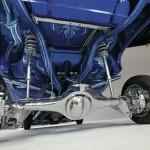The cars we drive daily are intricate machines, demanding regular upkeep and careful handling to maintain their optimal performance. Occasionally, warning lights illuminate on the dashboard, indicating potential issues. These warnings come in distinct symbols, often puzzling, especially when they appear while you’re on the road.
Most vehicles feature standardized emergency lights, universally recognizable. Though some warnings are more critical than others, it’s crucial to grasp the essential information each one conveys.
Firstly, there are red lights signaling an urgent matter that requires immediate attention. These alerts range from a door not properly closed or low fuel to problems with airbags or seatbelts. Red lights related to the battery, power steering, transmission, and braking system are particularly hazardous, jeopardizing safety until the problem is resolved.
Then there are amber lights, sometimes appearing slightly orange or yellow, indicating issues that need prompt investigation. While immediate action might not be imperative, you must address the problem before it escalates. Examples include alerts for low fluid levels, such as low washer fluid or low engine oil symbols. One of the most serious amber lights is the check engine light.
The check engine light, often disregarded but potentially perilous, is represented by an engine silhouette or the phrase “check engine” in capital letters. If this light appears, there’s no need to panic, but it’s essential to have the vehicle inspected by a trusted mechanic promptly. It can signify various problems, from engine damage and faulty wiring to an ill-fitting gas cap or ignition system failure.

Lastly, there are blue, green, and white lights. These serve as informational indicators and aren’t as alarming as the previous categories. They usually pertain to safe driving or signal that a specific feature is active, indicating there isn’t a problem. For instance, symbols related to activated lights like high beams or interior lights fall into this category. If a notification of these colors illuminates and you’re unsure of its meaning, consult your vehicle’s manual or the internet before visiting a mechanic.
Regardless of whether you’re a new driver or just need a refresher, it’s crucial to have a solid understanding of your vehicle and its features. For more examples of dashboard lights you should be aware of, please refer to the accompanying resource by Goodwill Car Donations.











